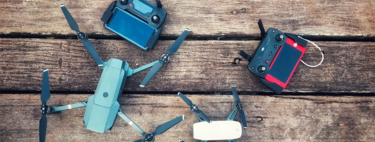The autonomy of drones is one of the major limitations and the lighter they are, the more challenges they encounter. However, Chinese developers have found a solution with solar energy.
The light microdon. The CoulombFly project, created by Beihang University in Beijing, has developed a microdrone powered solely by solar energy. The developers have patented a micro aerial vehicle (MAV) that weighs just 4.21 grams, but is not the lightest in the world. It also has an autonomy of one hour at a maximum height of 15 centimeters, carrying two grams of small sensors or controls.
How does it work? The aim of the study was to attach a propeller to an electrostatic motor in order to fly. Thanks to the electrostatic propulsion system, that is, using static electricity, they were able to generate the movement of the propeller. They managed to rise without consuming much energy, only 0.568 watts, which was provided by the integrated solar panels.
Totally solar energy. This new approach has been notable because, according to the researchers, continuous flight of microdrones using only natural sunlight has not yet been achieved. Solar panels are integrated into the microdrone and it does not need batteries, achieving a solar power output of 920 watts per square meter in flight. However, it has limitations in daytime use due to the lack of storage, so it can only be used in sunlight.
First flight tests. In the first tests, the CoulombFly was able to take off in less than a second by placing the solar cell in sunlight. The prototype achieved an hour of autonomy and carried small sensors weighing two grams. In the future, researchers hope to increase its endurance and load capacity.
The lightest? Chinese developers have argued that in 2019, the University of Singapore created a helicopter that was considered the smallest, but they wanted to challenge this project. However, there are more projects where they have sought to create smaller MAVs. First of all, the RoboBee, inspired by bees as its name suggests, has a weight that does not reach 90 milligrams and its main function is robotic research, specifically developed at the Harvard Microrobotics Labs. On the other hand, it is the DelFly Nimblea drone that flaps its wings and weighs only 29 grams, created for academic purposes. Finally, and dedicated to the general consumer, we find the DJI Mini 3 Pro, which has high-performance features and weighs less than 250 grams.
What is expected from CoulombFly? The developers hope the design will inspire a new generation of flying robots. They hope they will be able to connect to Wi-Fi networks, send photos and even keep watch thanks to their flight autonomy.
Image | Nature
Xataka | The curious European plan to measure ship emissions: drones “with a sense of smell”


![[Img #74664]](https://thelatestnews.world/wp-content/uploads/2024/12/James-Watson-The-controversial-genius-behind-the-double-helix-150x150.jpg)










![[Img #74664]](https://thelatestnews.world/wp-content/uploads/2024/12/James-Watson-The-controversial-genius-behind-the-double-helix-300x200.jpg)


Add Comment